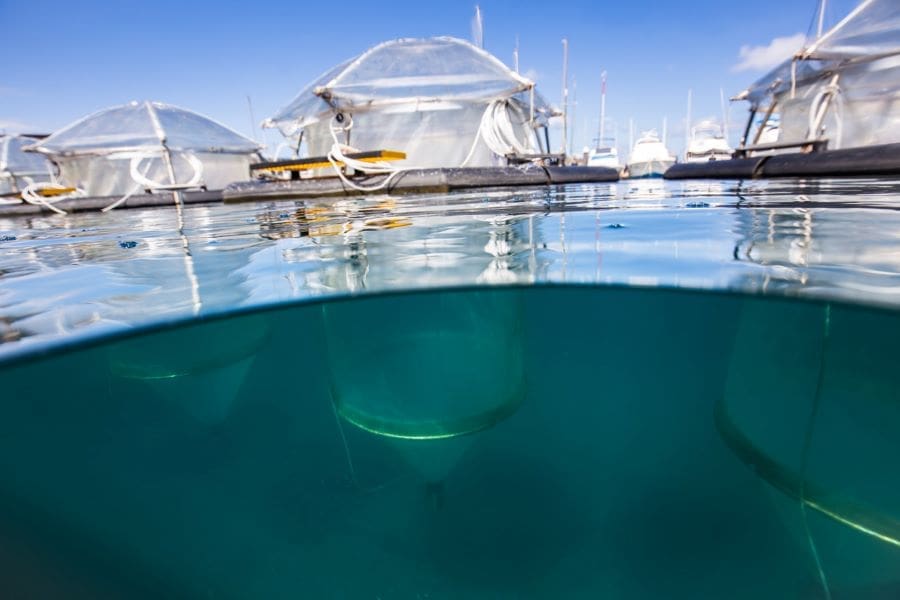Heat-related deaths show unexpected vulnerability among youth in Mexico
A recent study examining heat-related mortality in Mexico has challenged common assumptions about age-specific vulnerabilities to extreme temperatures. By analyzing detailed wet-bulb temperature measurements and age-specific mortality data, researchers found that younger individuals, particularly those under 35, account for a significant majority of heat-related deaths. This contrasts with traditional beliefs that the elderly are most at risk from temperature extremes.

The findings published in Science Advances reveal that people under 35 years old represent 75% of heat-related deaths and 87% of heat-related lost life years in Mexico. In contrast, cold-related deaths overwhelmingly impact older populations, with those aged 50 and above accounting for 96% of cold-related fatalities and 80% of cold-related lost life years. The study also projects that under the SSP 3–7.0 emissions scenario – a high-end projection for end-of-century climate change – heat-related deaths among those under 35 will increase by 32%, while declining by 33% among other age groups.
Mexico’s unique combination of detailed mortality data and extreme historical humid heat provided a robust dataset for analysis. The researchers highlighted the role of humid heat, represented by wet-bulb temperature, in exacerbating human thermoregulation challenges, particularly in younger populations. Historically, temperature exposure has been a significant cause of premature deaths globally, with humid heat posing an increasing threat as the climate changes.
This study builds on a growing body of research showing that climate change amplifies heat-related mortality risks. While earlier studies emphasized the elderly’s vulnerability, the findings from Mexico underscore a notable shift in the distribution of temperature-related mortality burdens. Younger populations, especially those in humid and economically stressed regions, face heightened risks that could redefine climate adaptation strategies.
The research calls for targeted policies to mitigate the impacts of extreme heat on younger demographics. Public health measures, infrastructure adaptations, and educational campaigns focusing on heat-related risks for youth are critical. As the climate crisis continues to evolve, understanding and addressing these shifting vulnerabilities will be essential for equitable adaptation and resilience strategies.
Journal Reference:
Andrew J. Wilson et al. ‘Heat disproportionately kills young people: Evidence from wet-bulb temperature in Mexico’, Science Advances 10, eadq3367 (2024). DOI: 10.1126/sciadv.adq3367
Article Source:
Press Release/Material by American Association for the Advancement of Science (AAAS)
Roof greening in major Chinese cities possibly afford a large potential carbon sink
Science China Press – In China, about 85% of the carbon emissions stem from cities, with large cities being the main contributors. Considering China’s economic development, relying on only conventional emission reduction measures is insufficient.
Various studies have shown that large-scale greening (e.g. afforestation or urban greening) can create carbon sinks, which offset CO2 emissions. However, in China, fertile lands (especially suburbs) have been occupied by agricultural lands and natural vegetations, and incorporation of additional carbon sinks on these lands is particularly difficult. Furthermore, greening in deserts has large technical difficulties and economic costs and could strain the water resources.
Open lands in cities are limited, and thus, conducting wide-scale urban greening is impossible. Fortunately, cities have abundant roof resources, which could be utilised to resolve this dilemma. Roof greening is an effective measure for reducing requisite investment, saving land and increasing green spaces in the limited urban areas, thereby contributing to climate change mitigation.

Therefore, a research team from Shenzhen University used large-scale Earth observation data from 2020 and scenario analysis (grass or shrub planting scenarios) to explore the possible carbon sinks of roof greening in all major Chinese cities under ideal conditions (assuming actual roof greening can achieve optimal capacity of natural grass and shrubs under excellent greening technology, management and investment conditions), and evaluated its contribution to carbon neutrality.
Their results show that roof greening in all major Chinese cities could possibly afford a large potential carbon sink (approximately 52.2 Tg C a-1 for grass planting scenario and 41.0 Tg C a-1 for shrub planting scenario), directly offsetting about 2.4%–3.0% of the urban carbon emissions (equivalent to fully offsetting the household emissions), with great potential for harvesting the carbon tax (about 19.6 -24.9 US$ billion per year) and mitigating the thermal environment and energy consumption (e.g. reducing the demand for air conditioning and heating).
In addition, prioritizing greenery on low-rise roofs and middle-low-rise roofs can harvest the most carbon sinks (over 90%).
Their findings provide novel insight for China’s carbon neutrality goals and the Sustainable Development Goal. Moreover, their study methods (estimation carbon sink of roof greening) can be migrated to other cities around the world, which contributes to global climate mitigation.
The study was published in Science Bulletin, the multidisciplinary academic journal supervised by the Chinese Academy of Sciences (CAS) and co-sponsored by the CAS and the National Natural Science Foundation of China (NSFC).
Journal Reference:
Chao Yang, Yinghui Zhang, Min Chen, Song Zhu, Yuzhi Tang, Zhixin Zhang, Wei Ma, Huizeng Liu, Junyi Chen, Bohui Tang, Dejin Zhang, Zhengdong Huang, Xuqing Wang, Wei Tu, Cuiling Liu, Tiezhu Shi, Haiying Xu, Aihong Cui, Fanyi Meng, Tianhong Zhao, Kai Guo, Wenhao Guo, Bi Fan, Quande Qin, Wuyang Hong, Haishan Wu, Bing Wang, Jinrong Zeng, Ka Wai Wu, Qingquan Li, ‘Roof greening in major Chinese cities possibly afford a large potential carbon sink’, Science Bulletin 69 (20) (2024). DOI: 10.1016/j.scib.2024.08.021
Article Source:
Press Release/Material by Science China Press
How do marine food webs respond to increasing alkalinity?
GEOMAR – The ocean naturally absorbs a quarter to a third of man-made CO2 emissions, but this process also leads to the acidification of seawater. By increasing the alkalinity of seawater through the addition of certain minerals (e.g., carbonates and silicates), the ocean can chemically bind more CO2 without further acidification. However, there is still little research on the environmental effects of Ocean Alkalinity Enhancement (OAE).
Scientists from Prof. Ulf Riebesell´s group at GEOMAR Helmholtz Centre for Ocean Research Kiel, as part of the European oceanNETs project, have now investigated the response of zooplankton and potential impacts on the food web for the first time in an experiment conducted off Gran Canaria.
The results of their study are published in the journal Science Advances.
Experimenting in giant test tubes
The study adopted an approach with moderate perturbations to seawater chemistry: CO2-equilibrated Ocean Alkalinity Enhancement. With this approach, the alkalised water that has already absorbed CO2 intended for carbon dioxide removal (CDR) before being released to the marine environment. For their experiment, the scientists used KOSMOS mesocosms (Kiel Off-Shore Mesocosms for Ocean Simulations) – large test tubes that are lowered directly into the seawater, isolating eight cubic metres of the water column.
Different concentrations of sodium carbonate and bicarbonate were added to achieve varying intensities of CO2-equilibrated OAE, ranging from no increase in alkalinity to a doubling of natural alkalinity. Over a period of 33 days, the researchers monitored the effects of alkalinisation on zooplankton, which plays a key role in transferring energy through the food web up to fish. A range of responses were studied in the zooplankton, from biomass and production to diversity and fatty acids.

Overall, researchers found that the plankton communities remained stable and that the zooplankton largely tolerated the moderate chemical changes associated with CO2-equilibrated OAE. During the experiment, the nutritional quality of the particulate matter on which zooplankton can feed potentially deteriorated, but this did not seem to affect the consumers. The researches argue that food limitation, a result of the oligotrophic conditions under which this experiment took place, and which characterize subtropical waters, could have buffered these possible indirect responses of zooplankton to OAE.
“Our study shows that the increase in alkalinity has minor impacts on the zooplankton and that the food web as a whole remains stable,” says Nicolás Sánchez, PhD student and first author of the study.
Potential in climate protection and need for further research
Ocean Alkalinity Enhancement could become an important ally in reducing CO2 emissions to combat climate change. By enabling the ocean to absorb more CO2 without becoming more acidic, this approach could strengthen the ocean’s role as a buffer against global warming. It could help bridge the transition to a future where fossil fuels are replaced by renewables, emissions from industries that cannot be decarbonized are neutralised, and historical carbon emissions are safely removed and stored. However, extensive research is urgently needed in order to determine the impact of OAE on the whole marine environment.
“Our experiment has shown that CO2-equilibrated OAE does not have a lasting impact on zooplankton and the food web in the nutrient-poor subtropical area we studied,” says Nicolás Sánchez, “but this does not say anything about how it will affect other marine environments, nor about the safety of other, technically more feasible forms of OAE that cause greater changes to seawater chemistry”.
The scientists recommend further research on the method and across different ecosystems, as there will not be a single OAE approach that can be applied everywhere.
Sánchez: “Our study is a promising first step towards defining a responsible framework for the application of alkalinity enhancement.”
Journal Reference:
Sánchez, N., Goldenberg, S., Brüggemann, D., Taucher, J., Riebesell, U., ‘Plankton food web structure and productivity under ocean alkalinity enhancement’, Science Advances 10, eado0264 (2024). DOI: 10.1126/sciadv.ado0264
Article Source:
Press Release/Material by Helmholtz Centre for Ocean Research Kiel (GEOMAR)
Featured image credit: Gerd Altmann | Pixabay




